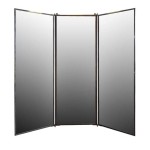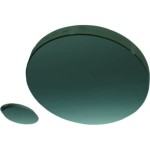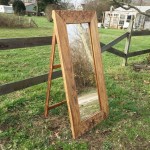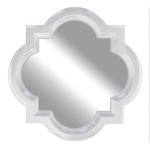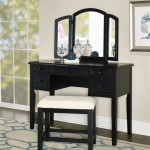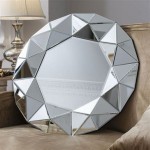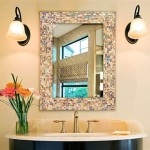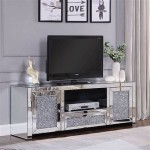Victorian Floor Length Mirror
The Victorian era, spanning the reign of Queen Victoria from 1837 to 1901, witnessed a flourishing of decorative arts. Among these, the Victorian floor-length mirror stands out as a testament to the era’s distinctive aesthetic and social values. These mirrors served not only a practical purpose but also functioned as significant decorative elements, reflecting the era’s emphasis on opulence and craftsmanship.
Victorian floor-length mirrors are characterized by their substantial size, often reaching impressive heights. This scale contributed to a sense of grandeur within Victorian interiors, which were frequently designed with high ceilings and spacious proportions. The large reflective surface also amplified natural light, a desirable feature in a period predating widespread electricity.
The frames of these mirrors showcase the era’s penchant for ornate decoration. Common materials included richly carved wood, often mahogany, walnut, or rosewood. Gilding, typically in gold leaf, was frequently applied to highlight the intricate carvings. Popular motifs incorporated into the frame designs included acanthus leaves, scrolls, flowers, and cherubs, reflecting the influence of various historical styles, such as Gothic Revival, Rococo, and Renaissance Revival.
Beyond the carved wooden frames, some Victorian floor-length mirrors featured elaborate embellishments. Inlaid mother-of-pearl, intricate marquetry, and decorative painted panels added further layers of ornamentation. These details contributed to the overall luxurious appearance of the mirrors, signifying wealth and status.
The mirror plate itself also varied. Early Victorian mirrors often utilized mercury-backed glass, which could produce a slightly distorted reflection. Later in the era, advancements in glassmaking led to the development of clearer, silvered glass, resulting in a more accurate reflection. The size and quality of the glass contributed significantly to the mirror's overall value.
The placement of a floor-length mirror within a Victorian home was carefully considered. Often positioned in bedrooms, dressing rooms, and hallways, these mirrors served both practical and decorative purposes. They allowed individuals to assess their attire, contributing to the era's emphasis on appearance and social etiquette. Simultaneously, they enhanced the room's décor, reflecting light and creating an illusion of greater space.
The cheval mirror, a type of freestanding floor-length mirror with an adjustable tilting frame, gained popularity during the Victorian period. Its practicality and mobility made it a desirable addition to bedrooms and dressing areas. The frames of cheval mirrors often mirrored the decorative styles seen in other Victorian furniture, further contributing to a cohesive interior design.
The Victorian floor-length mirror also held symbolic meaning. Mirrors, in general, have long been associated with vanity and self-reflection. In the Victorian era, with its emphasis on social status and outward appearances, the mirror played a significant role in shaping self-perception and presentation. The act of gazing into a full-length mirror was not merely a practical act but also a moment of self-assessment and preparation for social interaction.
Today, Victorian floor-length mirrors are highly sought-after antiques. Their craftsmanship, decorative details, and historical significance make them desirable additions to both traditional and eclectic interiors. Collectors value these mirrors for their unique aesthetic qualities, while interior decorators appreciate their ability to add a touch of Victorian elegance to a contemporary space.
Identifying an authentic Victorian floor-length mirror requires careful examination. Features such as the type of wood, the carving style, the presence of gilding, and the quality of the mirror plate can help determine its age and authenticity. Consulting with antique experts is recommended for those seeking to invest in genuine Victorian pieces.
The care and maintenance of a Victorian floor-length mirror are essential for preserving its value and beauty. Regular dusting with a soft cloth is recommended to prevent the buildup of dirt and grime. Harsh chemicals should be avoided, as they can damage the delicate finish of the frame and the mirror plate. Professional restoration may be necessary for mirrors with significant damage or deterioration.
The Victorian floor-length mirror serves as a tangible link to a bygone era. Its enduring appeal lies not only in its aesthetic beauty but also in its reflection of the social and cultural values of the Victorian period. These mirrors continue to captivate and inspire, offering a glimpse into a time of intricate craftsmanship and an appreciation for the decorative arts.

Arched Victorian Hand Casted Full Length Mirror In Mild Steel Corsica Designs

All Solid Wood Dressing Mirror Pure Full Length Retro Floor European Style Bedroom China Made In Com

Victorian Mahogany Cheval Mirror At 1stdibs Standing Antique Floor

Trifold Victorian Ladies Full Length Mirror Women Live Auction Items

Full Length Mirror Gold French Wall Vintage Gilded Handmade Victorian Baroque

Extra Large Full Length Gold Rococo Dress Mirror Big Vintage Mirrors Victorian

Victorian Mahogany Full Length Dressing Mirror Sturmans Antiques

Victorian Style Carving Rectangle Full Length Mirror Floor Leaner 190 Cm Large

Large Classic Baroque Mirror 17th Century Antique Italian Silver Leaf Made In Italy Full Length Victorian Home Style Item 8064 Hong Kong

Hn 0255 Victorian Standing Mirror Full Length Furniture Home Living Decor Mirrors On Carou

